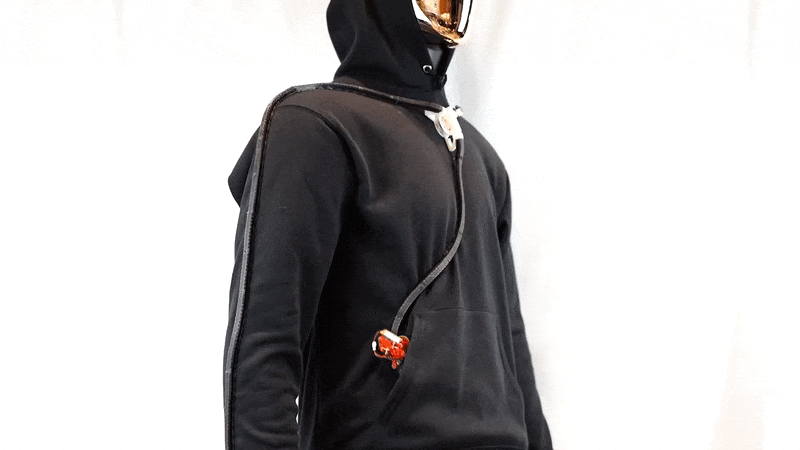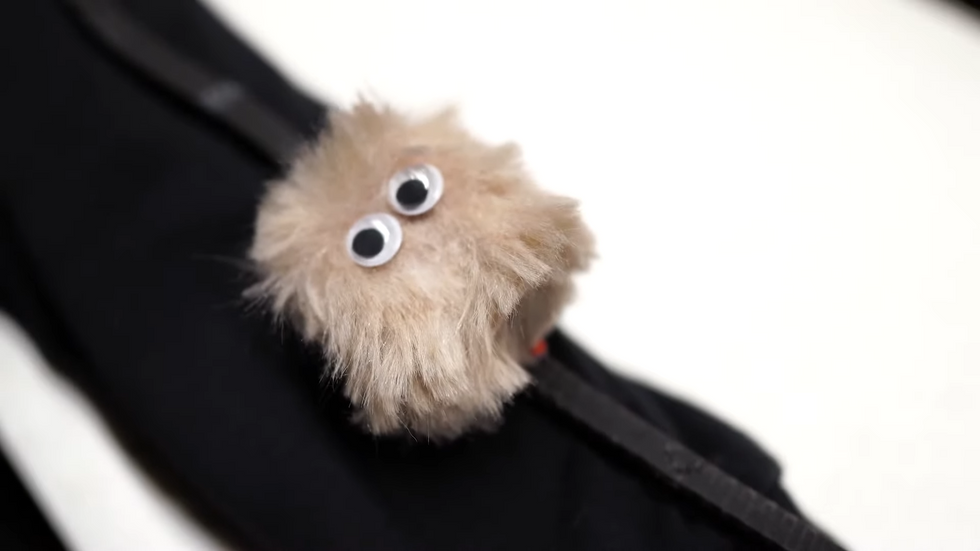A Wearable Robotic Assistant That’s All Over You

This is a guest post. The views expressed here are solely those of the author and do not represent positions of IEEE Spectrum or the IEEE.
Researchers at the Small Artifacts Lab (SMART LAB) at the University of Maryland have been working on a small wearable robot called Calico. Weighing just 18 grams, the robot attaches to a special track sewn on top of your clothing and is ready for work by traversing your garments, which allows it to do all kinds of things, including acting as a stethoscope to listen to your heart and lungs and coaching you through a fitness class.
University of Maryland
One of the biggest challenges for Calico is localization: GPS, of course, isn't precise enough to help you determine where the robot is on your clothing. The researchers solved this problem by embedding neodymium magnets into the clothing track at even intervals, which can be used as markers. With onboard sensors, Calico can detect these magnets, and use them to estimate where the robot is currently located and allowing it to effectively plan a path across your body. It's a very effective system, as the robot never missed a single marker throughout the development cycle.
The Calico robot can carry a 20-gram payload. Depending on the direction of travel, the robot can achieve speeds between 115 millimeters per second and 227 mm/s. Thanks to the low-power design, the little rover's 100 milliampere-hour battery will last more than 8 hours in an idle state or 30 minutes with continuous movement. Wireless charging could further extend the operating time of the robot.
When describing their research, the SMART LAB members came up with many applications for their wearable. A microphone and a stethoscope add-on enable the robot to sense vital signs, for example. The robot could travel to a predefined location to listen to your organs, or a doctor could teleoperate it in real time. And because the system already has an accelerometer, it could be used to detect falls.
If you want to learn how to dance or be guided through a workout routine, the system can guide you through some moves, track your form, and provide haptic feedback on your performance. Extending that general idea to medical applications, your little buddy could be used for rehabilitation as a motivator to perform exercises and as a progress monitor.
A wearable assistant with no display makes it challenging to provide meaningful feedback to the user. To overcome this issue, the researchers came up with data physicalization. For example, the device can show your progress on specific tasks by turning your arm into a physical progress bar. As you get closer to hitting your daily goals, the device will move further up your arm.
 In the future, your assistant could be personalized through accessories like fur and googly eyes.University of Maryland
In the future, your assistant could be personalized through accessories like fur and googly eyes.University of Maryland
And of course, a purely show-off" application exists for this wearable. With the addition of some fur and googly eyes, having a fluffy friend wandering around you at all times would get you some reactions. If you add sound, LEDs, or even displays, you have a guaranteed conversation starter on yourself.
For more information about Calico, check out the Small Artifacts Lab website and the paper describing this work in more detail published 7 September 2022 in the Proceedings of the ACM on Interactive, Mobile, Wearable and Ubiquitous Technologies.